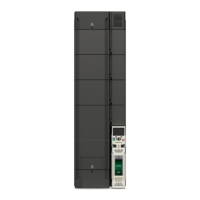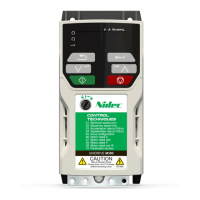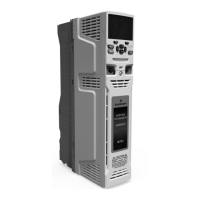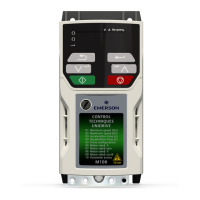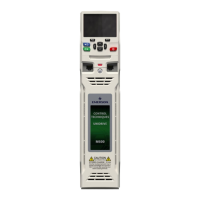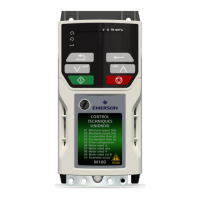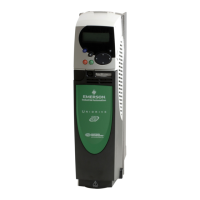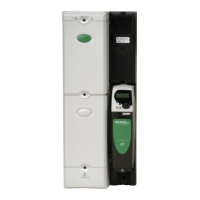The required change of frequency Δw = 50Hz. The acceleration and jerk are converted from the parameter values as follows:
a
Max
= 100 / ramp rate = 20.0Hz/s
J
Max
= 100 / MaxRateOfChangeOfAcceleration (02.007) = 32.3Hz/s
2
The linear ramp time T
Linear
= Δw x a
Max
= 50.0 / 20.0 = 2.5s
The frequency change for the acceleration to reach its limit w
B
= a
Max
2
/ 2J
Max
= 20.0
2
/ (2 x 32.3) = 6.19Hz
The required frequency change for Δw = 50Hz and this is greater than 2w
B
, i.e. Δw > 2 x 6.19Hz. Therefore the time for the ramp
T
SRamp2
= (Δw / a
Max
) + (a
Max
/ J
Max
) = (50.0 / 20.0) + (20.0 / 32.3) = 2.5 + 0.62 = 3.12s
Note that the default value of MaxRateOfChangeOfAcceleration (02.007) has been chosen so that when it is combined with the default acceleration
rate, each of the S sections of the ramp is 20% of the overall time for the frequency change, i.e. 0.62/3.12 x 100% = 20%. This is the same as if
SRampSet-upMode (02.041) = 2 and SRampPercentage (02.040) = 20% (see parameter SRampSet-upMode (02.041) for alternative methods of
setting up the S ramp function).
If the required change of frequency had been 5.0Hz, i.e. less than 2 x wB, then the alternative equation should be used:
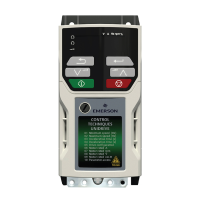
